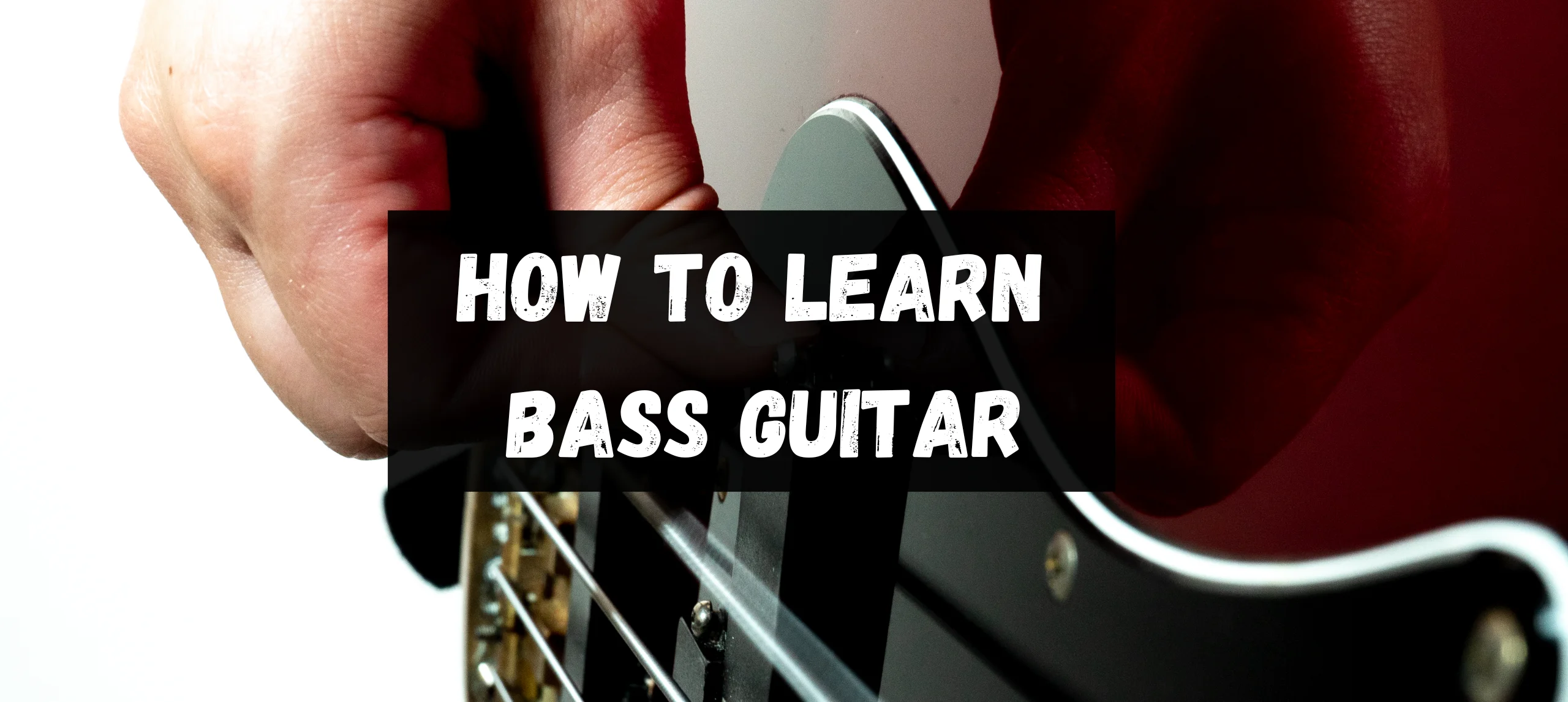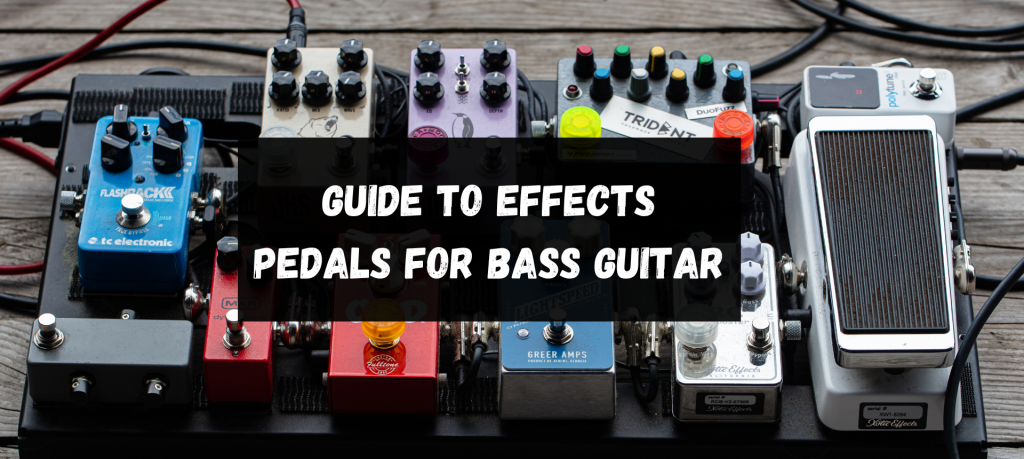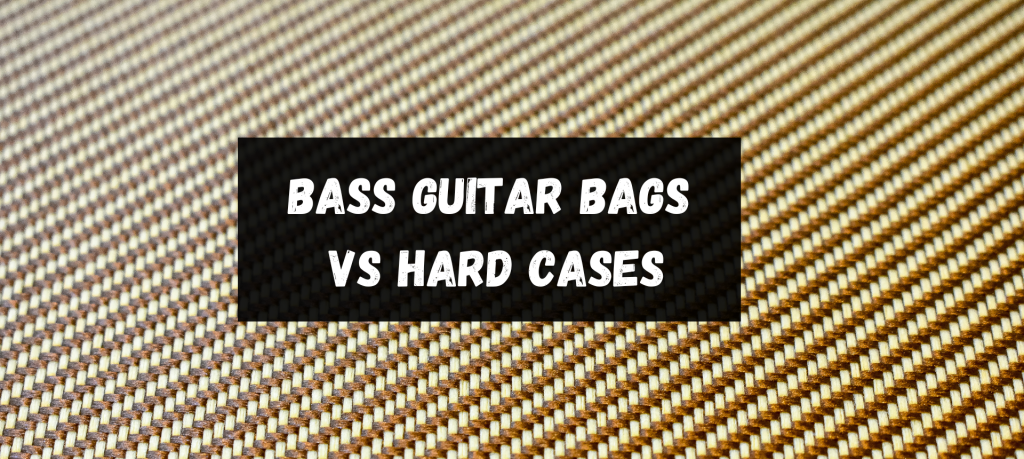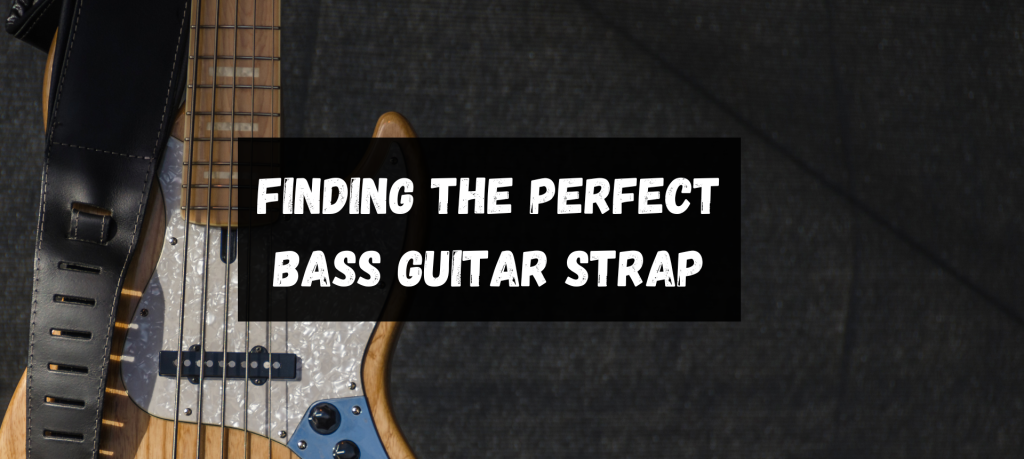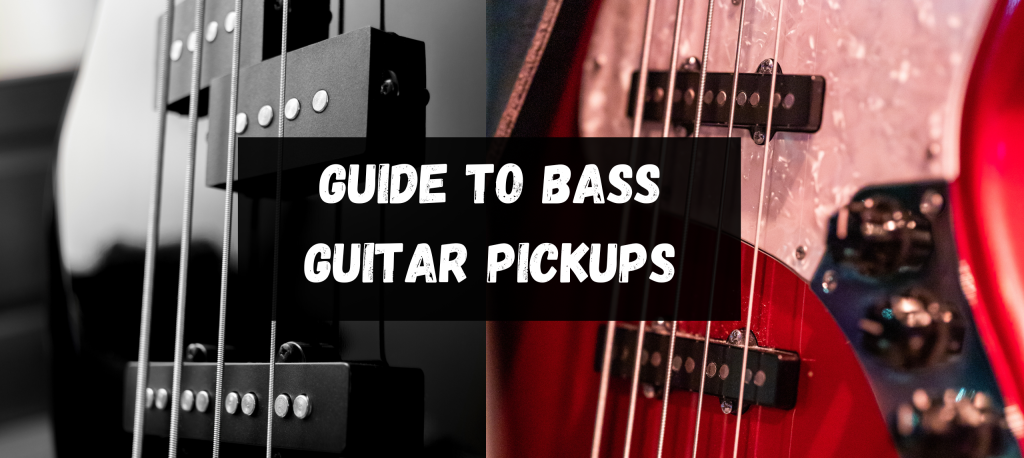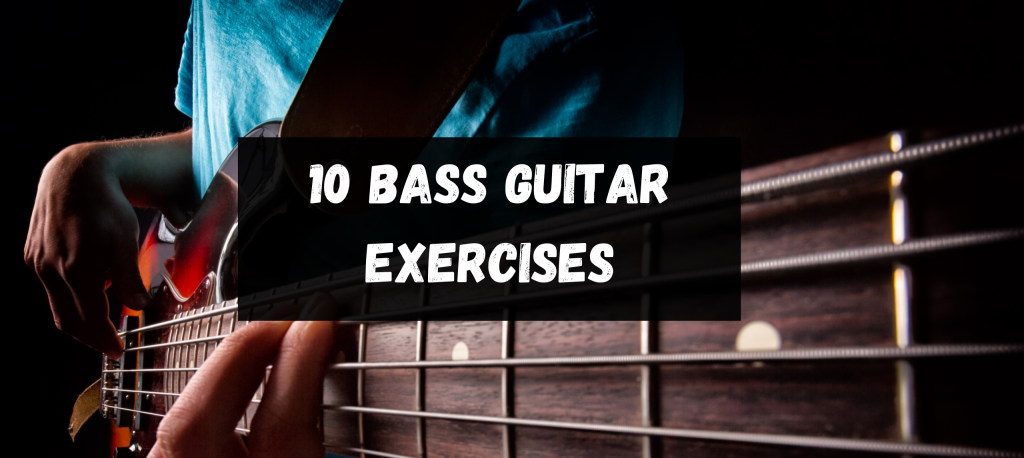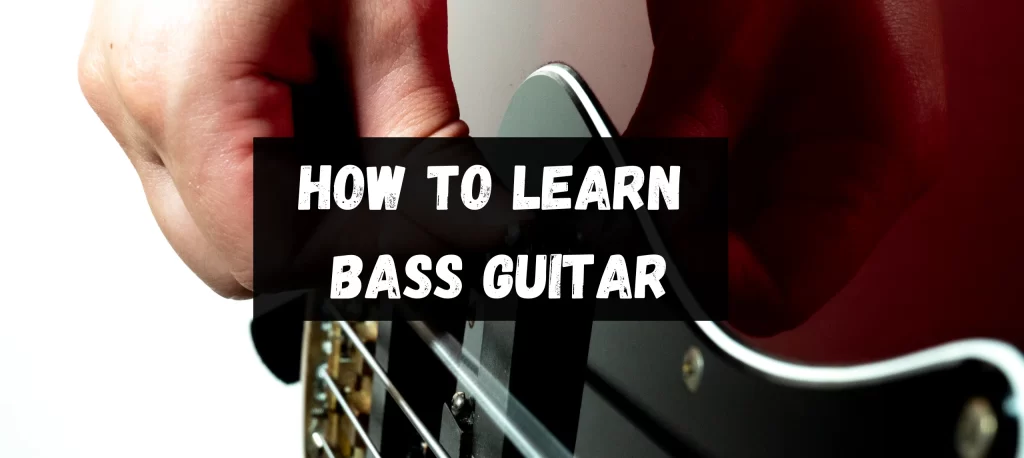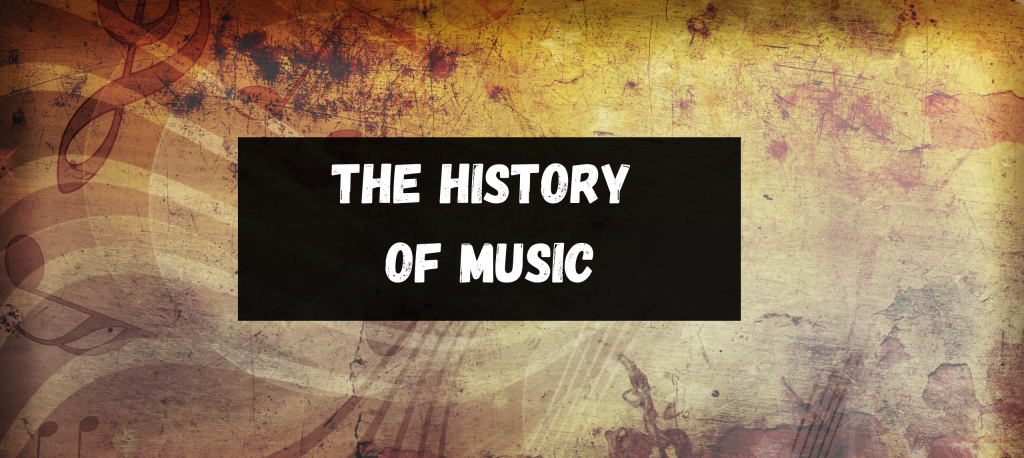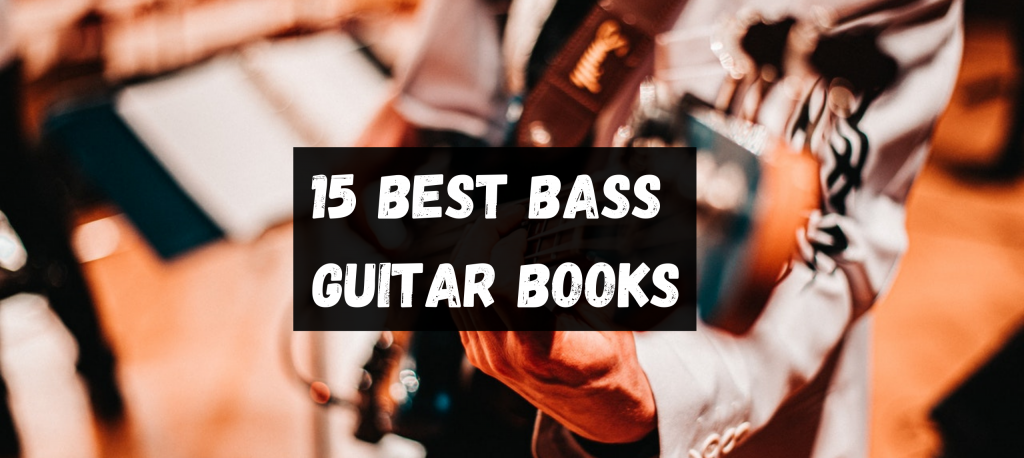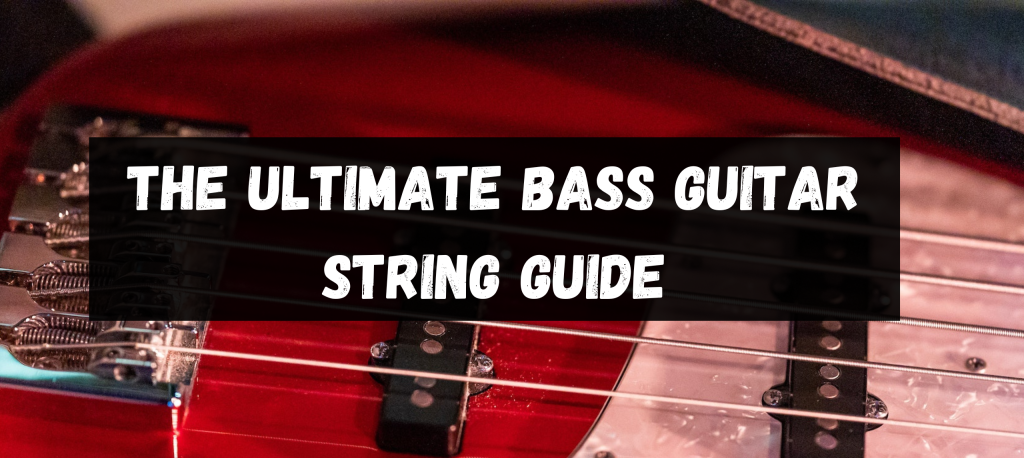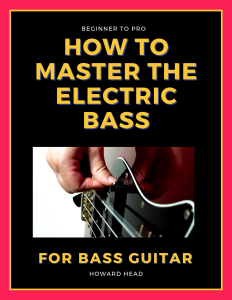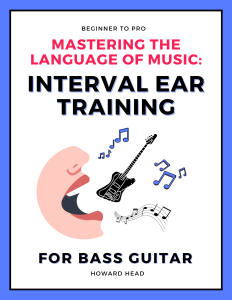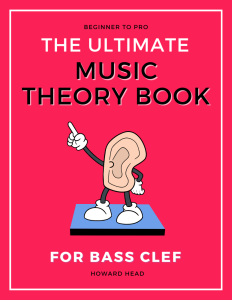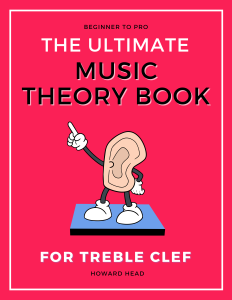July 23, 2023
Howard
Hello, aspiring bassists! You’re about to embark on a thrilling musical journey and I’m here to guide you every step of the way. Why the bass, you ask? Well, have you ever been in the presence of a song that just seemed to seep into your veins and take control of your pulse? That, dear friends, is the magic of the bass guitar – the unsung hero that seamlessly weaves the rhythmic and harmonic threads of a song together.
Now, imagine being the one in control of that power! Feels exciting, right? That’s why I’m going to share everything you need to know about mastering this incredible instrument. From selecting your first bass guitar to understanding the nuances of rhythm and harmony; from grasping effective practice techniques to learning how to keep your bass in perfect shape – I’ve got you covered!
- The bass guitar reinforces the rhythm and defines the harmony.
By learning to play it, you unlock a unique skill that adds depth and harmony to any musical composition. With this guide, we’ll journey together, exploring everything you need to become an accomplished bassist.
Intrigued? I thought you might be! So pick up your plectrum or get those fingers ready to stroll down the fretboard. The world of bass awaits, and trust us, it’s a world you’re going to want to explore. Get ready to pluck, slap, and groove your way into the vibrant, pulsating heart of music! Let’s get this show on the road!
Key Takeaways
- The Appeal of Bass: Bass guitar is a powerful and unique instrument, responsible for providing rhythm and depth to music. It might not always be the centre of attention, but its contribution is crucial in creating a rich and engaging sound.
- Starting Your Bass Journey: A good bass guitar and a basic understanding of its parts is the first step. You don’t need the most expensive gear to get started – focus more on comfortable playability and sound.
- Mastering Techniques: From basic fingerstyle to advanced techniques like slap bass, tapping, harmonics, playing chords, and raking – there’s always something new to learn and master.
- The Importance of Music Theory: Understanding scales, chords, and how to create basslines will give you the tools to add more creativity and originality to your bass playing.
- Choosing the Right Accessories: From straps to amps, each accessory adds value to your playing experience and helps you get the best out of your instrument.
- Learning Resources & Inspiration: Whether it’s through books, online platforms, or communities, there’s a wealth of resources available to help you learn and grow as a bassist. And don’t forget to seek inspiration from famous bassists and iconic bass lines.
- FAQs: We’ve answered some common questions about bass guitars, clearing up any confusion for beginners. Remember, everyone starts somewhere!
- Final Thoughts: Learning to play the bass guitar is a journey. It may seem daunting at first, but with practice, patience, and passion, you’ll soon find yourself creating beautiful bass lines and grooves. Embrace the process and enjoy every moment of your musical journey!
Why Learn the Bass Guitar?

The bass guitar isn’t just an instrument – it’s an experience. When the bass guitar enters the scene, you feel it, resonating in your bones, echoing in your soul.
You’re the musical bridge connecting the rhythm and harmony, the ingredient that brings together the whole band. You see, while the spotlight often shines on the lead guitar or the vocals, it’s the bass that sets the stage, creating the canvas for the melody to shine.
But it’s not just about what the bass can do for the music. It’s also about what learning to play the bass can do for you. It sharpens your sense of timing and improves your listening skills as you learn to align your basslines with the rhythm of the drums, the harmony and the melody of the guitar. It encourages creativity and expression as you experiment with new bass lines and techniques. And let’s not forget the pure, unadulterated joy of creating music, of being part of that beautiful, universal language that speaks to hearts across the world.
So, why learn the bass guitar? Because it’s not just an instrument – it’s a rhythm, a feeling, a language. And once you’ve picked up a bass guitar and felt the strings hum under your fingers, once you’ve played that first note and felt the music resonate within you – trust me, you’ll understand.
Choosing and Buying the Right Bass Guitar
Selecting the perfect bass isn’t a one-size-fits-all scenario, and that’s what makes it thrilling. Your ideal bass guitar will be a unique blend of personal preferences, musical styles, and budget. Whether you’re rocking out in your garage, grooving at a local gig, or simply practising alone, the right bass guitar will complement you.
Considerations range from the type of music you want to play, the size of the bass, and yes, even the look of it! A metal enthusiast may find their groove in a 5-string bass for those lower notes, while a funk lover might gravitate towards a 4-string J-bass for its punchy and bright tone.
And hey, don’t fret about the budget! You don’t have to break the bank to find a quality bass guitar. There are some fantastic options out there that won’t empty your wallet but will still let you lay down some sick grooves.
To help you navigate these choices, we’ve got some detailed guides ready for you. Check out our articles on “How to Choose a Bass Guitar” for a deep dive into the world of bass guitars.
Remember, the best bass guitar for you is the one that feels right in your hands and resonates with your musical taste. I highly recommend going to a shop to try before you buy. So, are you ready to find your perfect match? The search is half the fun, after all!
Understanding Your Bass Guitar
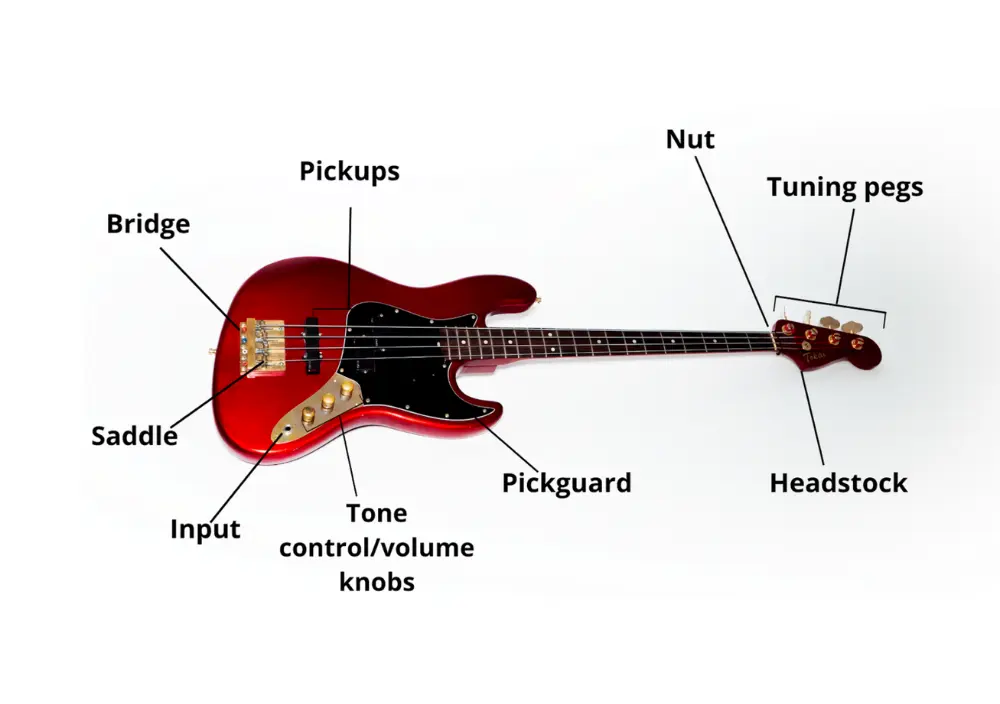
Let’s start with the headstock – that’s the top part of your bass where the strings are wound around tuning pegs. These pegs adjust the tension of your strings, allowing you to tune your bass to perfection.
Next, we venture down to the neck of the bass guitar. The neck is your playground – it’s where all the magic happens. You’ll notice metal strips running across the neck; these are your frets. Each fret represents a musical note. When you press a string down against a fret and strike the string, you play that note. There is such thing as a fretless bass, which has a distinct tone and is much more difficult to play as it requires the musician to precisely pinpoint the note.
Attached to the neck, we have the body of the bass, the largest part of the instrument, typically made of woods such as Ash, Alder, Basswood as they’re relatively lightweight.
Then there are the strings. Most bass guitars come with four strings, tuned in fourths to E, A, D, G. Each string when played open (not pressing down on any fret) resonates at one of these notes. Some bass guitars have more strings for a wider range of notes. In a very general sense, 5 string basses give you a great expanded range, whereas 4 string basses are more traditional and the extra string spacing gives you more room for Slap technique. Please check our detailed bass guitar string guide.
Then we have the pickups. These little devices capture the vibrations of your strings and convert them into electrical signals. Your amplifier then takes these signals and transforms them into the full-bodied, resonant tones of the bass.
Now let’s turn our attention to those intriguing knobs on the body of your bass. The tone control knobs are your gateway to shaping your sound. Typically, bass guitars come with at least two control knobs – one for volume and one for tone. The volume knob is self-explanatory; it controls how loud your bass sounds.
But what about that tone knob? This is where you can really start to experiment with your sound. The tone control adjusts the colour or character of your sound by controlling how much of the high-frequency sounds are let through. Want a bright, sharp tone? Turn the tone control up to let more high frequencies through. Looking for a deeper, warmer sound? Turn it down to limit the high frequencies.
Finally, the bridge is located on the body of your bass, where the strings end. It helps support the strings and transmit their vibrations to the body of the guitar. It’s also where you can adjust the action of your strings – that is, the height of your strings from the fretboard. The action can influence how easy it is to press the strings against the frets, and can therefore affect your playing comfort and the intonation, or tuning accuracy, of your bass. Adjusting your bridge is a fine art that can truly fine-tune your playing experience!
Getting Started
Alright, you’ve got your bass, you’re familiar with its parts, and you’re itching to lay down some grooves. But wait! Before you start, there are a few essential basics you should know.
Holding Your Bass Guitar
First things first, let’s get you comfortable with your new partner in rhythm. Whether you’re standing or sitting, the key is to keep your bass guitar stable and balanced. Make sure the neck of your guitar is slightly elevated – it should slant upward rather than being parallel with the floor. This position allows for easier access to the fretboard. And remember, the more comfortable you are, the easier it will be to play those smooth bass lines. I highly recommend buying a wide strap to share the weight of the bass, a bass guitar can be much heavier than a guitar!
Tuning Your Bass Guitar
Each string on your bass guitar should correspond to a specific note. For a 4-string bass, from thickest to thinnest, these are E, A, D, G. Using a tuner (please invest in a good tuner!) you’ll adjust the tension of each string via the tuning pegs on the headstock until they’re pitch-perfect.
| Tuning Name | Notes |
|---|---|
| 4 String | E, A, D, G |
| 5 String | B, E, A, D, G |
| 6 String | B, E, A, D, G, C |
| Drop D | D, A, D, G |
| 1/2 Step Down | Eb, Ab, Db, Gb |
Reading Bass Tablature
And now for the final act of our beginner’s show – reading bass tabs! Bass tablature, or tabs, are a simple way to read music specifically designed for fretted instruments. They tell you which frets to press on which strings to play a song. And who said you couldn’t read music? Though learning the bass clef notes and reading sheet music is also very useful and recommended if you ever want to play in theatres or with concert bands (you usually get to double up the tuba parts, and that usually calls for a 5 string bass!).
Whew, we’ve covered a lot! But remember, every bass guitarist started where you are now. With each note you play, you’re one step closer to mastering the bass.
Mastering the Basics of Playing Bass Guitar
Let’s dive right into the exciting realm of playing techniques! Now that you’re all set up and comfortable, it’s time to get those strings vibrating and your heart thumping.
Fingerstyle vs. Pick
One of the first decisions you’ll have to make is whether you want to use your fingers or a pick to play the bass. Both methods have their advantages and produce distinct sounds. Fingerstyle playing can give a round, warm tone and is great for a lot of genres like jazz, funk, and reggae. On the other hand, using a pick can create a more aggressive, punchy sound, often preferred in rock and punk genres. Try both and see which one resonates with you! Personally, I prefer using my fingers as I can get more of a feeling of what I’m playing (plus I prefer the rounded sound).
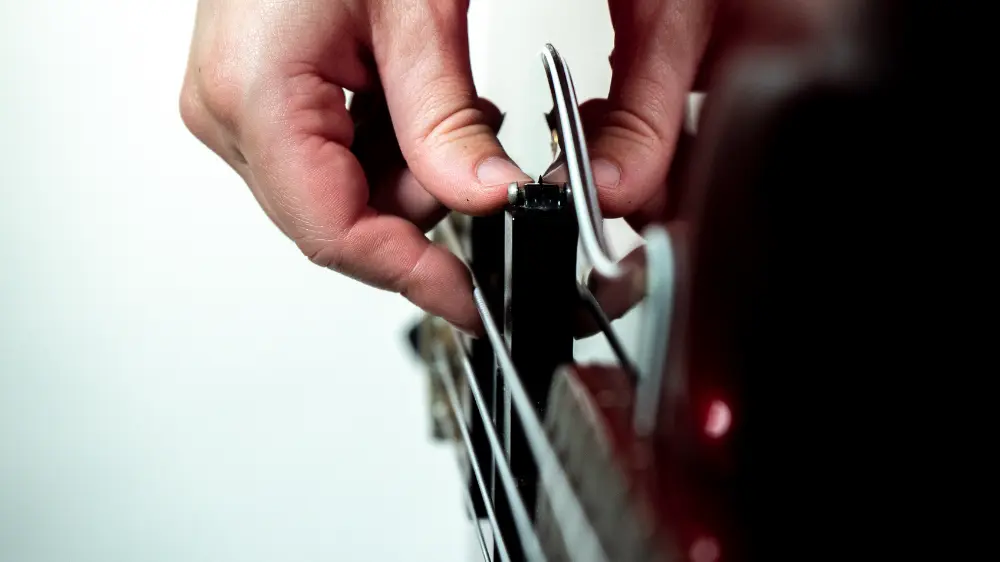
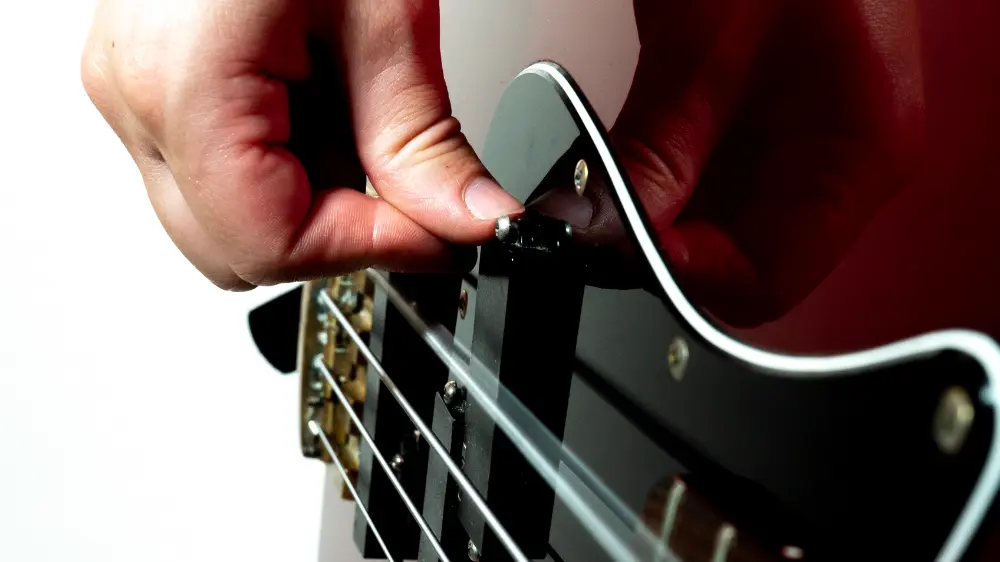
Learning Bass Scales
Much like a writer learns words to form sentences, a musician learns scales to create music. Scales are the building blocks of music, providing a roadmap to navigate the fretboard. Start with the major and minor scales, which form the basis for most music. As you become comfortable with these, you can explore more complex scales, expanding your musical vocabulary.
Building Finger Strength and Speed
Speed and strength are crucial for smooth, dynamic bass playing. Finger exercises, often called ‘finger aerobics,’ can help increase your agility, speed, and endurance on the fretboard. Start slow and gradually increase your speed to avoid strain. Remember, consistency is key, and daily practice will lead to improvement.
Read my blog on 10 Bass Guitar Exercises.
Learning to Read Rhythm
The bass player is the bridge between the rhythmic and melodic elements of a band, so having a good sense of rhythm is essential. Learn to understand rhythmic notation and practice playing along with a metronome to develop your timing skills.
Advanced Techniques
As you continue on your bass journey, it’s time to introduce a few advanced techniques into your repertoire. These techniques can add a new level of expressiveness and creativity to your playing, opening up a whole new world of musical possibilities.
Slap Bass
Slap bass is a percussive technique that involves “slapping” the strings with the thumb and “popping” them with the fingers. This technique is often associated with funk, but it can be used in various genres. It can add a rhythmic, groovy element to your bass lines, giving them a lively, energetic feel.
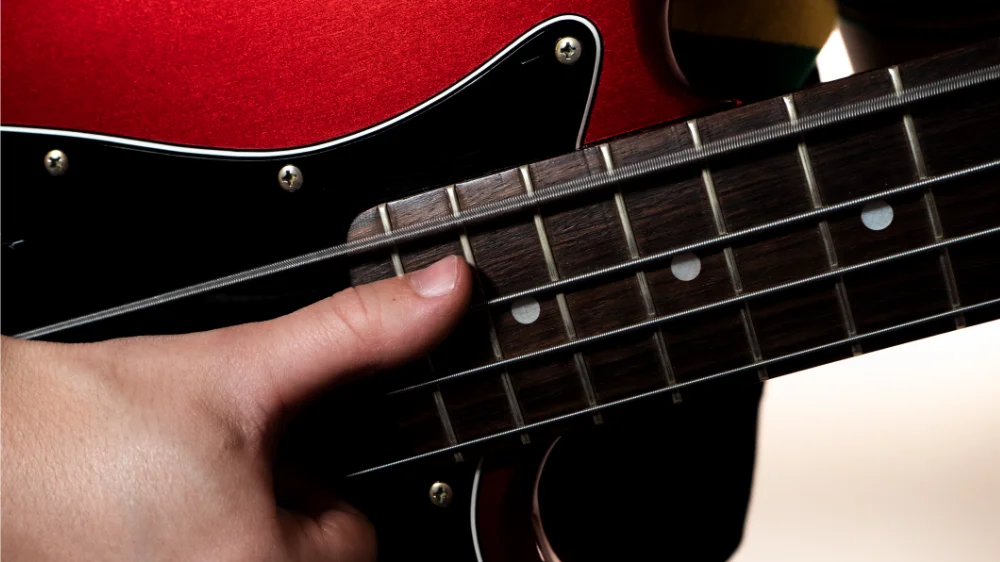
Tapping
Tapping is another exciting technique that involves using the fingers of both hands to tap the strings onto the fretboard, creating notes and melodies. This can allow for rapid, fluid passages that would be difficult or impossible to achieve with traditional plucking techniques. It’s a flashy technique that can add a wow factor to your playing.
Harmonics
Harmonics are a beautiful way to add a bell-like, ethereal quality to your sound. They are achieved by lightly touching a string at specific points along the fretboard, rather than pressing it down, and then plucking the string. The result is a note that rings out at a higher pitch than the fretted note, giving you a whole new range of sonic possibilities.
Playing Chords
While the bass guitar is often thought of as a single-note instrument, don’t let that stop you from exploring chords. Playing chords on the bass can add a rich, harmonic depth to your sound. Because of the low register of the bass, playing full chords can sometimes sound muddy, so bassists often play two or three-note chords, also known as double stops or triads.
Raking
Raking, in the bass guitar world, is a technique where you use a single finger to pluck through multiple strings in a fluid motion, similar to how you’d rake leaves (hence the name!). It’s a great tool to have in your kit for swift transitions between strings, giving your playing an extra layer of smoothness and efficiency.
Music Theory for Bass Players
A significant part of your role as a bass guitarist involves defining the harmony of a piece. Harmony, in a nutshell, is how individual sounds blend together in music. As the bassist, you have the power to shape and define this harmonic structure.
Ever wondered, What is Music?
Anyway, music theory is very important. Having good gear and tone is great, but if you’re not using your head, it wont get you too far!
The Role of the Bass Guitarist in Defining Harmony
The bassist often plays a leading role in defining a song’s harmony, providing the foundation over which other instruments create the melody. One of the ways you do this is by playing chord tones – the notes that make up a chord. By choosing to play specific chord tones, you can emphasise certain aspects of the harmony, add depth to the sound, and provide a solid foundation for the rest of the band.
Choosing which chord tones to play, and when to play them, is an art in itself. It involves understanding the chord structure of the song, recognising which notes belong to which chords, and being able to find those notes on your fretboard. But don’t worry, as complex as it might sound now, with time and practice, it will become second nature.
But how many types of chords are there? Well, the world of chords is vast and varied. The majority of chords we have are major chords, minor chords, dominant chords, and half-diminished chords. Each type has its unique character and role in creating different moods and tones in music. For a bass player, knowing your way around chords helps you understand and anticipate the harmony of a song.
Delving into Ear Training
As a bass player, developing your ears is a vital part of your musical journey. Welcome to the world of Bass Guitar Ear Training! This is about training your ears to recognise notes, intervals, chords, and rhythms. When you can recognize these elements by ear, you can play songs more easily, improvise with more confidence, and generally become more in tune with the music you’re making. Start simple, practice regularly, and soon, you’ll start noticing a significant improvement. I’ve got a list of common chord types and their extensions here for you to listen to:
| Chord Name | Notes |
|---|---|
| Major Chords | |
| CMaj7 | C, E, G, B |
| CMaj9 | C, E, G, B, D |
| CMaj#11 | C, E, G, B, F# |
| CMaj13 | C, E, G, B, A |
| CMaj9(add13) | C, E, G, B, D, A |
| Minor Chords | |
| Cmin7 | C, Eb, G, Bb |
| Cmin9 | C, Eb, G, Bb, D |
| Cmin11 | C, Eb, G, Bb, F |
| Cmin13 | C, Eb, G, Bb, A |
| Dominant Chords | |
| C7 | C, E, G, Bb |
| C9 | C, E, G, Bb, D |
| C11 | C, E, G, Bb, F |
| C13 | C, E, G, Bb, A |
| Half Diminished Chords | |
| C-7b5 | C, Eb, Gb, Bb |
Getting to Grips with Scales
Scales, like chords, are the building blocks of music. If chords go vertically, melody goes horizontally. Scales are sequences of notes that serve as the foundation for bass lines. As a bass player, having a solid understanding of scales can help you navigate the fretboard, create bass lines, and contribute to the harmonic structure of the music.
Exploring Rhythm and Time Signatures
The bass player is the heart of any band, keeping the rhythm and driving the groove. Understanding rhythm and time signatures is an essential part of your bass toolkit. Whether you’re playing in common time (4/4) or exploring more complex time signatures, your role is to keep the beat steady and make the music feel good. Remember, the bottom number tells you what note value you should count, the top number tells you how many of those notes make up the bar.
| Time Signature | Note Length | Beats per Measure |
|---|---|---|
| 2/4 | Quarter Note | 2 |
| 3/4 | Quarter Note | 3 |
| 4/4 | Quarter Note | 4 |
| 6/8 | Eighth Note | 6 |
| 9/8 | Eighth Note | 9 |
| 12/8 | Eighth Note | 12 |
| 5/4 | Quarter Note | 5 |
| 7/4 | Quarter Note | 7 |
Essential Bass Guitar Accessories
As you set off on your musical journey, there are several bass guitar accessories that can make your life easier, help you sound better, and take your playing to the next level.
As a general rule of thumb, it’s best to try before you buy by going to a local music store (The Bass Gallery), a trade show like The Bass Guitar Show, or a specialist online store like Bass Direct.
Bass Guitar Picks
Although some bassists prefer to use their fingers, others find that a bass guitar pick gives them a sharper, more defined sound. Picks come in various sizes, shapes, and materials, so you might want to experiment to find the one that feels best for you. A thick pick is usually required for bass! Learn from my bass guitar pick guide.
Bass Guitar Strap
A good strap is essential, particularly for those long jam sessions. It helps distribute the weight of the instrument, making it more comfortable to play for extended periods. When choosing a strap, look for something that’s durable and adjustable. I highly recommend Comfort Strapp straps.
Also, here’s a guide to help you find your perfect bass guitar strap.

Bass Guitar Bag
A good-quality bass guitar bag is necessary to protect your instrument from bumps and scratches. It also makes it easier to carry your bass to gigs, rehearsals, or lessons. Look for a bag that offers good padding and sturdy zippers.
Though a hard case has its benefits! Read this blog where I compare bass guitar bags vs hard cases.
Amp for a Bass Guitar
An amplifier is key to hearing the true sound of your bass guitar. Whether you’re practising at home or playing on stage, a good amp can make a significant difference in your sound.
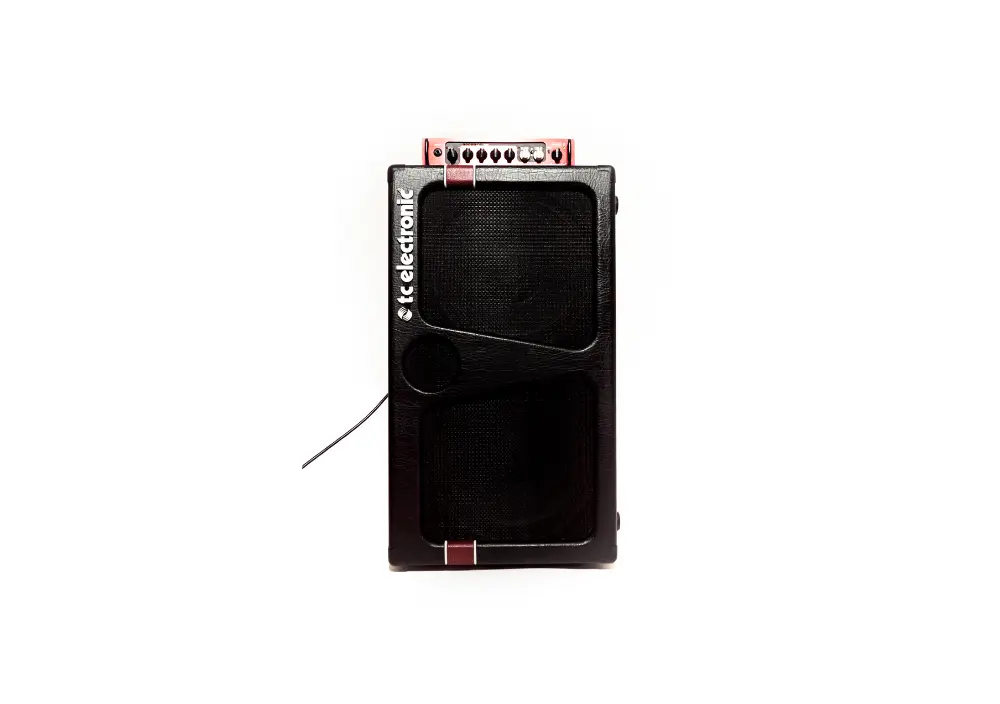
Effects Pedals for Bass Guitar
Effects pedals can add a whole new dimension to your sound, from distortions and overdrives to delays and modulations. They offer you a way to express your unique style and add some colour to your bass lines. Here’s an old picture of my board! I’ve even got a full effects pedal guide too.
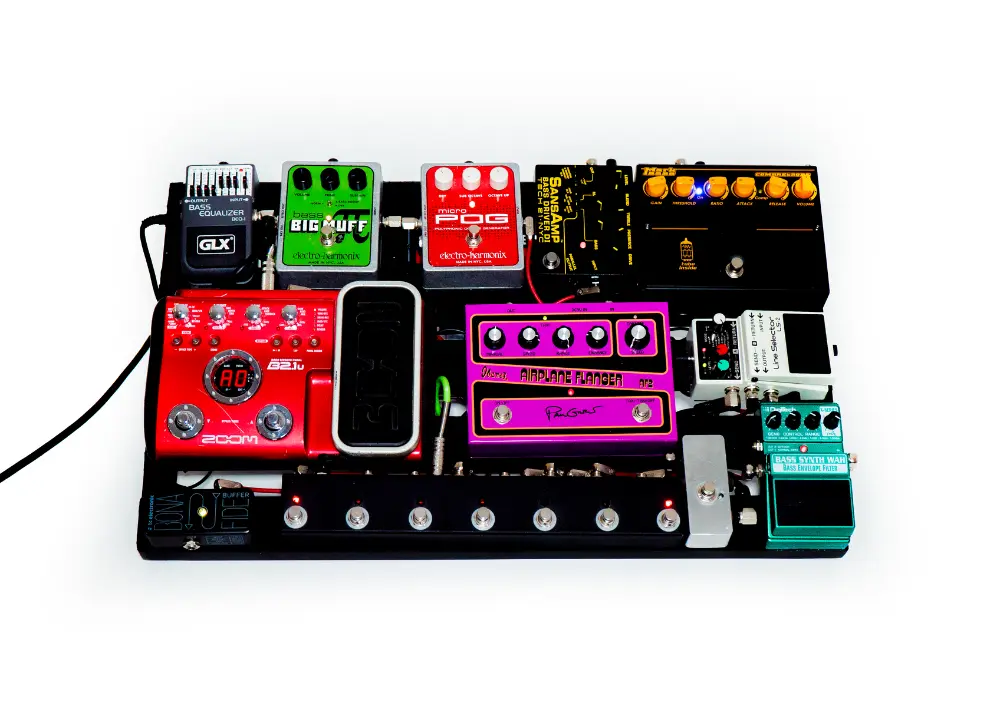
Bass Guitar Pickups
Pickups play a huge role in determining the tone of your bass. Whether you prefer the warmth of a vintage-style pickup or the clarity of a modern one, the right pickup can help you achieve your ideal sound. You usually have stock pickups in a bass, but there are many great brands out there (Bartolini, Aguilar, Nordstrand, EMG, Seymour Duncan and countless others) that can really upgrade your sound!
Learn more through my bass guitar pickups guide!
Bass Guitar Book
A well-structured bass guitar book can provide you with a wealth of knowledge. From techniques to music theory, a good book offers exercises, songs, and insights that can serve as a valuable resource throughout your bass playing journey.
Do I mention that I have a book out?
Bass Guitar Teacher
Last, but certainly not least, is a good bass guitar teacher. Having someone to guide you, correct your mistakes, and answer your questions can be instrumental (pun intended!) in your progress as a bassist. A good teacher can provide you with the structured learning and motivation needed to stay on track and achieve your goals.
Remember, these accessories are tools to help you on your journey. The right tools can make a difference, but it’s how you use them that will truly define your sound and style. So, go ahead and explore, experiment, and most importantly, enjoy the journey. Happy playing!
Resources for Learning Bass Guitar
To help you along your musical path, I’ve put together a list of comprehensive resources. These platforms provide in-depth lessons, valuable insights, and much-needed inspiration.
Books for Bass Mastery
There’s nothing quite like the tactile feel of a book to accompany your bass playing adventure. Here are a couple of excellent books that will guide you through your learning process:
- “Hal Leonard Bass Method – Complete Edition”: This all-inclusive book combines all three volumes of the renowned Hal Leonard Bass Method. Perfect for beginners, it offers lucid instructions accompanied by progressive lessons.
- “How to Master the Electric Bass”: Diving into advanced techniques, equipment knowledge, and a method of completely learning the entire fingerboard, this book is an enriching resource for novices and seasoned players alike.
Please see a full list of recommended bass guitar books.
Online Learning Platforms
In our digital age, the internet is a haven for learning resources. There are numerous platforms that cater specifically to aspiring bass guitarists:
StudyBass: A free platform, StudyBass provides an extensive range of lessons and exercises designed to illuminate the how’s and why’s of bass guitar.
YouTube: This popular video-sharing platform hosts a multitude of bass guitar tutorials. Channels like “BassBuzz”, “Talking Bass”, “Janek Gwizdala”, “Scotts Bass Lessons” offer content ranging from beginner to advanced levels and are beloved by bass enthusiasts worldwide.
Online Courses: Websites such as Coursera, Udemy, and Skillshare offer structured bass guitar courses designed by experienced musicians. These courses often include video lessons, practice exercises, and community forums.
Play-Along Platforms: Websites like Songsterr allow you to play along with your favourite songs. This interactive method is both fun and highly effective in improving your rhythm and timing. There are also many play-along videos on YouTube. I’ve even made a few on my channel!
Bass Guitar Communities
Being part of a bass guitar community can provide you with a sense of belonging, inspiration, and a platform to share your progress and hurdles. Here are a couple you might want to consider joining:
TalkBass Forum: As the largest online community for bassists with over 250,000 members, TalkBass covers a broad range of topics, including gear discussions, technique advice, theory lessons, and even health and fitness tips for musicians.
Reddit: Subreddits such as r/Bass and r/BassGuitar are thriving communities filled with bass players of all levels. Members regularly share advice, experiences, and provide motivation for one another.
Remember, everyone’s learning journey is unique. Explore these resources, discover what resonates with your learning style, and most importantly, relish the journey. Happy bass playing!
Inspiration: Iconic Bassists, Music Styles, and Bass Lines
Nothing fuels the passion for learning an instrument quite like the thrill of seeing it in the hands of a master or hearing it in a piece of iconic music. For the aspiring bassist, there is a rich tapestry of inspiration to draw from, filled with groundbreaking musicians, diverse musical styles, and unforgettable bass lines.
Iconic Bassists
As you embark on your bass guitar journey, consider these iconic bassists as guiding stars, each offering their unique style and technique:
Paul McCartney (The Beatles): Known for his melodious and innovative bass lines, McCartney’s work in The Beatles reshaped the role of the bass in popular music.
Flea (Red Hot Chili Peppers): Flea’s funky slapping technique and aggressive energy have made him one of the most influential bassists in rock music.
Geddy Lee (Rush): From intricate progressive rock lines to beautiful melodic motifs, Geddy Lee’s work in Rush is a testament to technical proficiency and musical creativity.
Jaco Pastorius: Known as the “Jimi Hendrix of the bass,” Pastorius revolutionised the electric bass’s sound and capabilities, bringing the instrument to the forefront with his virtuosic technique and expressive playing.
Popular Music Styles for Bass
The bass guitar is a versatile instrument found in virtually every genre of music. Here are a few styles that offer exciting opportunities for bassists:
Funk: Known for its groovy and rhythmic bass lines, funk music often showcases the bass as a lead instrument. Think of songs like “Give It Away” by Red Hot Chili Peppers or “Super Freak” by Rick James.
Rock: From driving eighth-note lines to complex progressive rock riffs, rock music provides a wide range of roles for the bass guitar. Classic rock songs like “Money” by Pink Floyd or “Tom Sawyer” by Rush offer some iconic bass lines.
Jazz: Jazz bass playing can be both a challenging and rewarding endeavour. The genre’s emphasis on improvisation and complex harmony provides ample opportunities for the bass to shine.
Reggae: Characterised by its offbeat rhythms, reggae provides a unique role for the bass as a melodic and rhythmic anchor.
Iconic Bass Lines
Certain songs are instantly recognisable thanks to their iconic bass lines. Attempting to learn these can be a fun challenge and a great way to improve your skills:
“Another One Bites The Dust” by Queen: John Deacon’s simple yet infectious bass line is a fantastic example of how a bass can define a song’s groove.
“Billie Jean” by Michael Jackson: The groovy and melodic bass line, played by Louis Johnson, is an integral part of this pop classic.
“The Chain” by Fleetwood Mac: John McVie’s melodic and driving bass line in this track provides the song’s emotional backbone and is an excellent example of the bass guitar’s role in a rock band.
“Feel Good Inc.” by Gorillaz: This song features an incredibly catchy bass line that drives the entire track, demonstrating the potential of the bass to carry a song’s main theme.
Remember, inspiration is all around you. It can be found in the past, in the innovative bass lines of iconic songs, and in the present, in the thriving global community of bassists. As you continue your journey, let this inspiration guide your practice, fuel your passion, and shape your unique voice as a bass guitarist. Happy playing!
Frequently Asked Questions
Can Any Bass Guitar Be Used for All Types of Genres?
The genre of music depends more on your playing style and technique than the type of bass you use.
How Different is the Experience of Playing Bass Compared to Guitar?
Playing bass is more about maintaining rhythm and harmony within a band, while guitar often focuses on melody and chords. Each has its unique role and feel.
Bass Guitar Techniques That are Actually Good on Guitars?
Fingerstyle playing, slapping, and muting techniques can be transferred from bass to guitar
Is Bass Guitar Easy to Learn?
The basics of bass guitar can be picked up relatively quickly, but like any instrument, mastering it takes time and dedication.
Is Bass Guitar Hard to Learn?
While the bass may have fewer strings than a guitar, mastering its role in a band context can be challenging but rewarding.
Can I Teach Myself Bass Guitar?
With resources like books & online lesson from credible musicians and practice, you can teach yourself to play bass guitar.
Can Bass Guitar Be Played Without Amplifier?
It will be much quieter. For full volume and sound quality, an amplifier is recommended. You can rest your head on the bass, to “hear” it through you.
Can a Beginner Play a Fretless Bass Guitar?
A beginner could play a fretless bass, but it requires a precise ear and finger placement. Fretted basses are often recommended for beginners.
Why Play Bass Guitar?
Bass guitar adds depth to music, helps set the rhythm, and can be a uniquely satisfying instrument to master.
Are Bass Guitars Heavy?
Some bass guitars can be heavy, but weight varies by model and design. Always try before you buy.
Are Bass Guitars Loud?
Acoustically, bass guitars are quieter than regular guitars. With an amplifier, they can be quite loud.
Can Bass Guitars Use Guitar Amps?
Technically yes, but guitar amps are not designed to handle the lower frequencies of a bass, which can lead to poor sound quality or damage.
Can Bass Guitars Have 6 Strings?
While 4-string models are standard, bass guitars can also have 5, 6, or even more strings for added range.
I Started Learning the Electric Bass Guitar, What Songs Should I Start Out With?
“Another One Bites The Dust” by Queen and “Billie Jean” by Michael Jackson have simple yet iconic bass lines perfect for beginners.
How Common is it for Bass Players to be Proficient in Guitar?
Many bassists also play guitar, and understanding both instruments can enrich your musical knowledge and versatility.
Conclusion
So, there you have it! An exhilarating ride through the landscape of learning the bass guitar. From the reasons to pick up this magnificent instrument, to understanding its parts, mastering the playing techniques, exploring music theory, investing in accessories, and getting inspired by legendary bassists, we’ve covered it all.
Your journey towards becoming a bassist is bound to be a fascinating one, filled with new discoveries and musical breakthroughs. But remember, the key to it all is practice and passion. Don’t let initial challenges deter you. Keep playing, keep grooving, and let the bass be your voice in the symphony of music. As we’ve seen, there are resources aplenty to guide you on your journey.
So, go ahead, seize the day, pick up that bass, and let your musical journey begin! Here’s to countless hours of toe-tapping, head-bobbing, and bass-thumping goodness. Your adventure starts now! Happy playing, future bassist!

Howard Head
I turn confused bass enthusiasts into bass gods through a simple and logical process.

